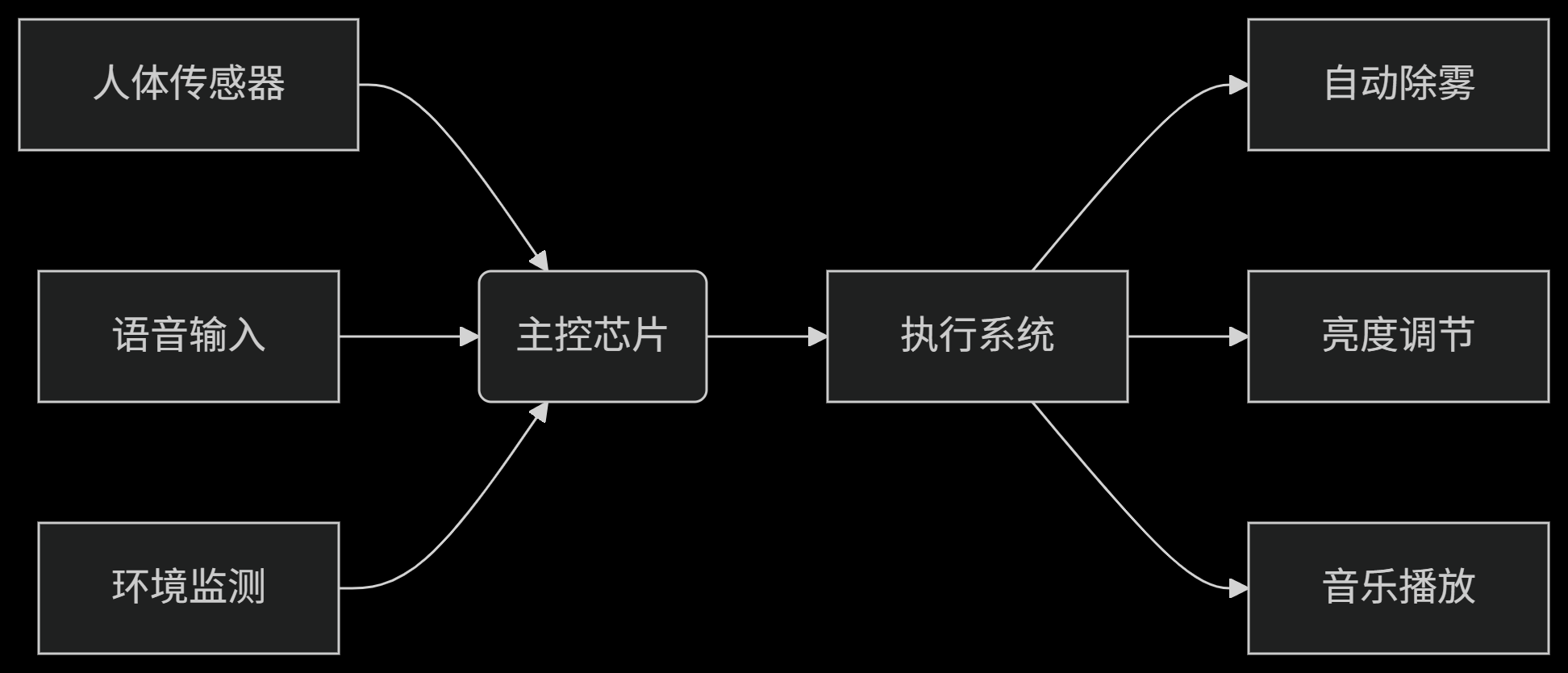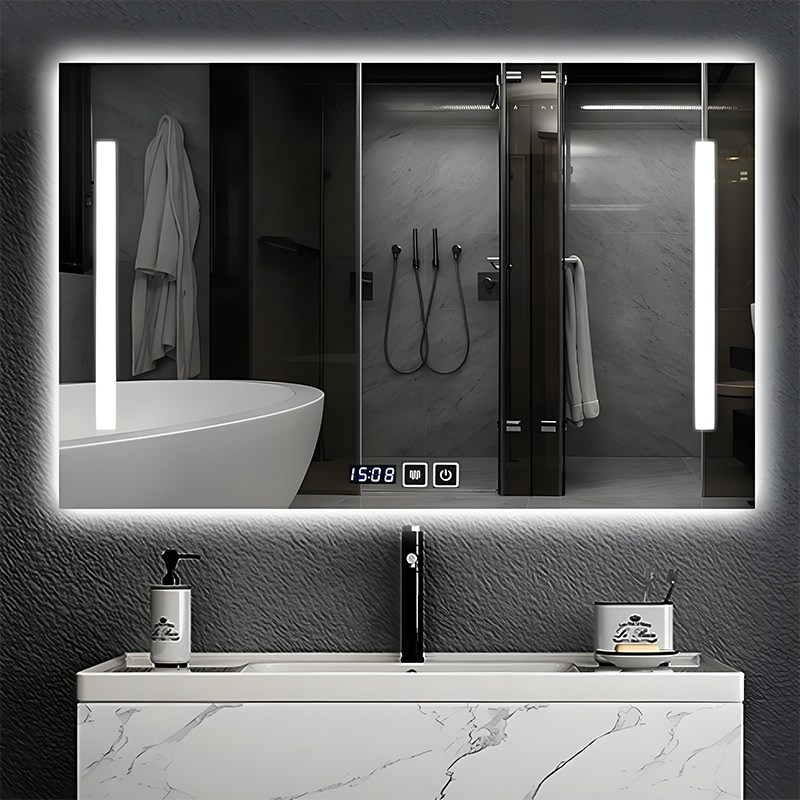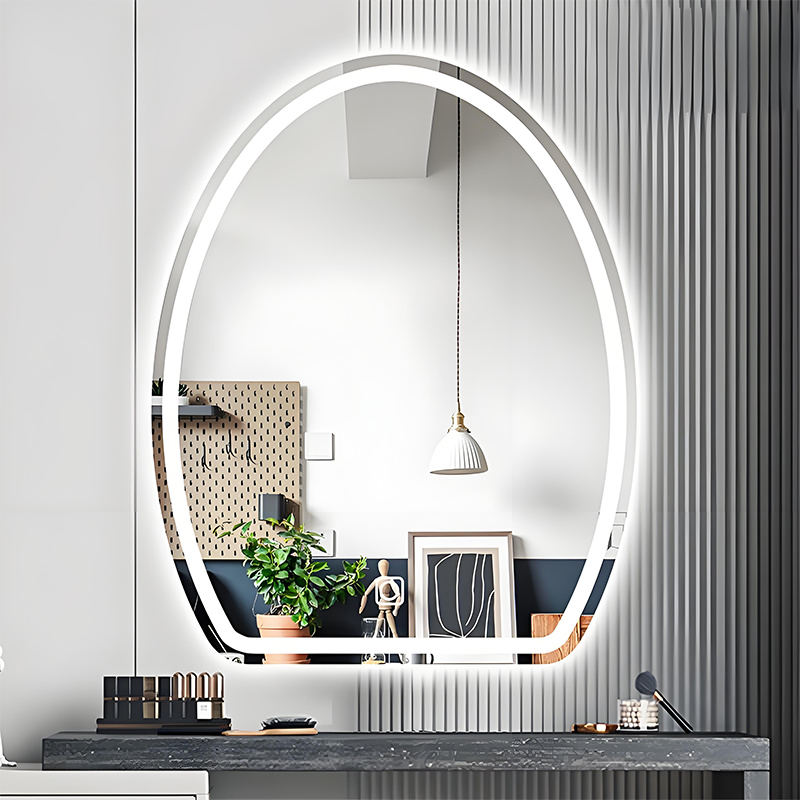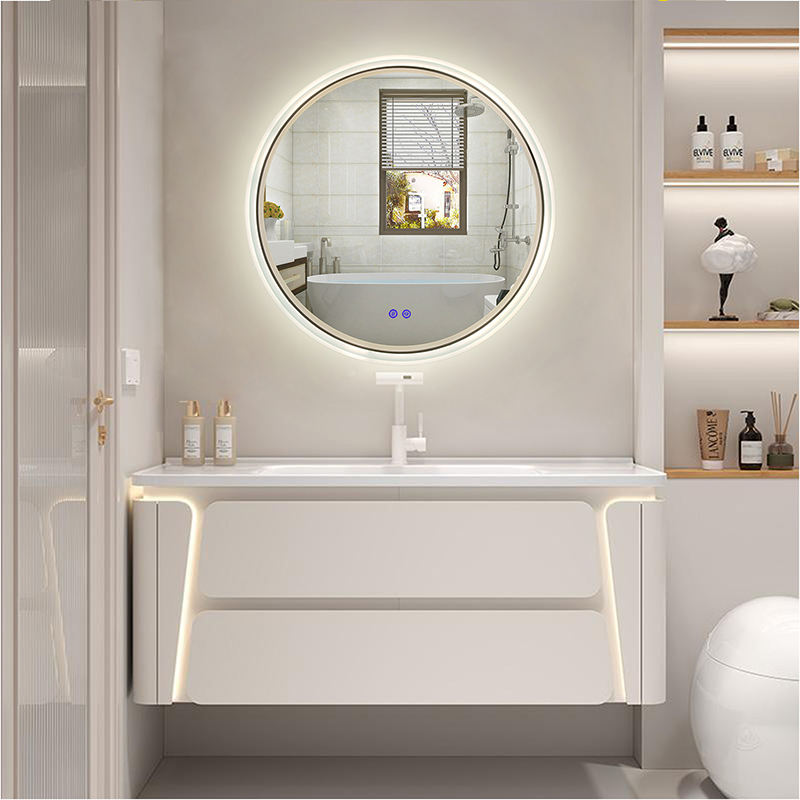Chapter 1 Functional Evolution History: Three Generations of Product Iterations
1.1 Original stage (2000-2010)
Material: ordinary glass + density board
Pain point: water vapor erosion causes deformation of opening and closing (repair rate exceeds 42%)
Case: The Shanghai Quality Inspection Bureau's random inspection in 2018 showed that 63% of mirror cabinets had formaldehyde emissions exceeding the standard
1.2 Functional awakening period (2011-2020)
Popularization of anti-fog technology: Electric heating film solution cost reduced by 80%
Storage system innovation: adjustable shelves + hidden socket design
Industry turning point: In 2016, Japan's TOTO launched the first mirror cabinet with integrated LED makeup mirror
1.3 Intelligent Integration Period (2021 to Present)
Core technology breakthrough:
Voice interaction module (average response speed < 0.8 seconds)
Human body sensing backlight system (power consumption < 3W/day)
Antibacterial coating (antibacterial rate 99.2%)
Market data: The global smart mirror cabinet has a compound annual growth rate of 17.3% (Statista 2023)
Chapter 2: Debunking the Myth of Purchasing: Six-Dimensional Evaluation Model
Dimension 1: Smart Module Necessity Matrix
| Function | Young Family | Elderly Group | Commercial Space |
| Anti-fog system | ★★★★ | ★★★★★ | ★★★☆ |
| Bluetooth Speaker | ★★★★ | ★★ | ★★ |
| Health Monitoring | ★★ | ★★★★★ | ☆ |
Dimension 2: Material safety red and black list
✅Aerospace grade aluminum-magnesium alloy frame (load bearing ≥ 50kg)
✅Automotive grade laminated glass (impact resistance increased by 300%)
❌PVC coated sheet (easy to bubble when exposed to moisture and heat)
Chapter 3 Customized mirror cabinet: the ultimate solution in the era of personalization
When standardized products cannot meet the needs of special-shaped spaces, customized mirror cabinets become the key to breaking the deadlock.
A high-end real estate project in Shenzhen used 3D scanning technology to customize a mirror cabinet set with a curvature radius of 1.8m for a curved bathroom,
increasing the storage volume by 65%.
It is worth noting that there are three major pitfalls to avoid when customizing mirror cabinets:
Dimension tolerance trap: Qualified manufacturers use laser cutting (error < 0.5mm)
Hidden charges: Hydraulic hinge upgrade fee should not exceed 8% of the total price
Smart module compatibility: Open API interface required
The "Magic Cube System" launched by a leading brand supports 72 module combinations. Users can freely choose special components such as medicine refrigerators and contact lens storage boxes, redefining the flexible production capabilities of customized mirror cabinets.
Chapter 4 The technological core of the smart mirror cabinet
The core competitiveness of smart mirror cabinets lies in their IoT integration capabilities:

Huawei's 2023 laboratory test shows that a smart mirror cabinet integrated with the Hongmeng system can increase the efficiency of device linkage by 40%, such as automatically starting the anti-fog mode when bathing and reporting the day's weather while brushing your teeth.
Chapter 5 Installation Revolution: From Destruction to Non-Destruction
Traditional installation pain points:
Need to destroy the tile drilling (failure rate 27%)
Horizontal error > 3mm causes the door panel to open automatically
Innovative solutions:
Aerospace-grade vacuum adsorption technology (load-bearing capacity up to 35kg)
Self-developed level calibrator (accuracy 0.1°)
Pipeline pre-buried diversion system (to avoid drilling later)
An old house renovation project in Guangzhou adopted a nail-free installation solution, which saved 3 hours of work per set and reduced the risk of damage compensation by 83%.
Chapter 6 Future Trends: Technology Trends in 2025
AR makeup trial system: L'Oreal and Panasonic jointly develop virtual makeup projection
Health manager: Early warning of stroke risk through micro-expression analysis
Energy self-circulation: Mirror photovoltaic coating converts lighting energy
Material revolution: Self-healing nano coating (scratches disappear in 24 hours)
Conclusion: A new paradigm for space value-added
When mirror cabinets evolve into a complex terminal integrating storage, intelligence,
diagnosis and entertainment, their value has long surpassed the object itself. Choosing a smart mirror cabinet is not only purchasing a home product, but also an efficiency revolution of investing in a 1.5㎡ space;
and customized mirror cabinets represent the ultimate solution in the era of personalized consumption. In the most private space of the bathroom, technology is reshaping the essence of life in the most gentle way.




